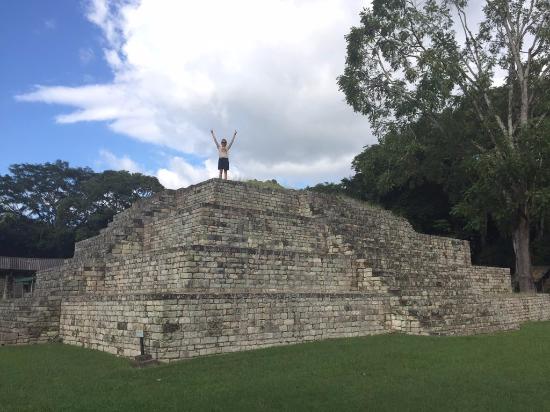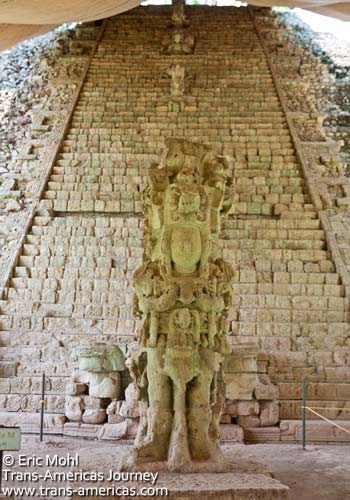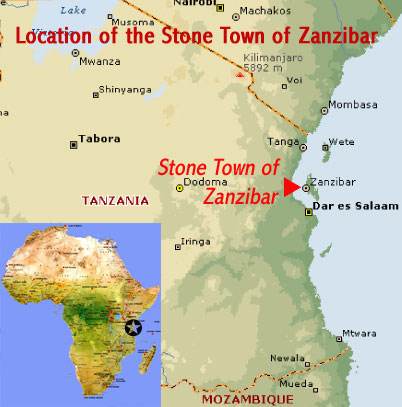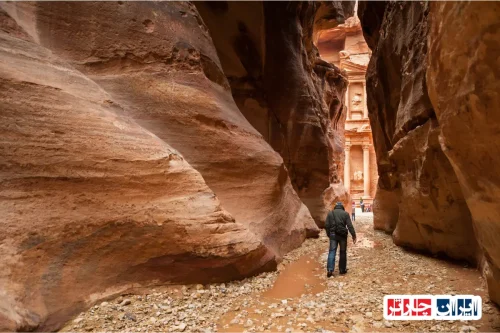Discover the Rich History and Architectural Marvels of the Copán Ruins in the Copán Department of Honduras
Exploring the Copán Ruins-Iran Charter offers a fascinating journey into the ancient civilization of the Maya, located in the heart of the Copán Department Honduras. These archaeological sites are renowned for their intricate hieroglyphic texts, impressive pyramids, and sophisticated urban planning that reflect the grandeur of Maya culture. Visitors can marvel at the remarkable stone carvings and monumental structures that have stood the test of time, revealing stories of kings, gods, and mythological tales. The strategic location of the Copán Ruins in Honduras played a vital role in trade, politics, and cultural exchange among Maya city-states, making it a significant hub of ancient civilization. Modern technology, such as aerial imaging and 3D mapping, continues to uncover new aspects of this archaeological wonder, deepening our understanding of Maya society. The site’s religious and ceremonial architecture, including elaborate temples and stelae, highlights the spiritual life and societal hierarchy of the Maya people. Preservation efforts, supported by UNESCO, aim to protect this invaluable heritage from natural and human threats, ensuring that future generations can continue to learn from and admire these ancient marvels. Whether you are a history enthusiast or a curious traveler, visiting the Copán Ruins in Honduras provides an unforgettable glimpse into a civilization that once thrived with innovation, artistry, and spiritual depth. For more insights, explore the Copán Ruins-Iran Charter and discover how this archaeological treasure continues to inspire and educate the world about the legacy of the Maya in Honduras.

Discover the Rich History of Copán Ruins in the Copán Department of Honduras
The Copán Ruins, located in the heart of the Copán Department of Honduras, represent one of the most significant archaeological sites of the ancient Mayan civilization. This remarkable site offers a window into the grandeur and complexity of Mayan culture, showcasing impressive architecture, hieroglyphic inscriptions, and intricate artwork. Exploring the history of the Copán Ruins reveals how this city-state thrived as a political, religious, and cultural hub during the Classic Period of the Mayan civilization.
The origins of the Copán site date back to approximately the 5th century AD, when it emerged as a prominent city within the Mayan world. Over centuries, it became renowned for its monumental sculptures, elaborate stelae, and sophisticated urban planning. The city’s strategic location in the Copán Department of Honduras facilitated trade routes and cultural exchanges, contributing to its prosperity and influence in the region.
Throughout its peak, the city witnessed the construction of grand temples, palaces, and ball courts, reflecting the architectural ingenuity of the Mayan people. The hieroglyphic stairway and the Hieroglyphic Staircase are among the most famous features, containing inscriptions that narrate the history of its rulers and significant events. The decline of Copán began around the 9th century AD, leading to its eventual abandonment, yet its archaeological remains continue to tell stories of a once-thriving civilization.
Architectural Marvels and Iconic Structures at Copán Ruins
The architecture of the Copán Ruins exemplifies the artistic and engineering prowess of the ancient Maya. The site features towering pyramids, intricately carved stelae, and elaborate altars that served both religious and political purposes. The Temple of the Hieroglyphic Stairway stands out as a masterpiece, with its detailed inscriptions and symbolic carvings that depict the lineage of rulers and mythological themes.
Among the most notable structures is the Acropolis, a complex of buildings that housed the royal palace and administrative centers. The elaborate stucco decorations and stone carvings found throughout the site highlight the advanced craftsmanship of Mayan artisans. These architectural elements not only served functional purposes but also conveyed religious beliefs and societal hierarchy.
The site’s layout demonstrates sophisticated urban planning, with plazas, causeways, and residential areas arranged to reflect social and ceremonial functions. Preservation efforts continue to protect these architectural treasures, ensuring that future generations can appreciate the ingenuity of the ancient Mayan builders in the Copán Department of Honduras.
Deciphering the Hieroglyphic Inscriptions and Mayan Script
The hieroglyphic inscriptions at Copán are among the most extensive and well-preserved examples of Mayan writing. These texts provide invaluable insights into the political history, dynastic succession, and religious beliefs of the Mayan civilization. Deciphering these inscriptions has been a collaborative effort among archaeologists and linguists, revealing stories of kings, wars, alliances, and divine rituals.
The Hieroglyphic Staircase, in particular, contains a detailed record of the city’s rulers and their achievements, spanning several generations. These inscriptions serve as a chronological record, helping researchers understand the timeline of events and the cultural significance of various monuments. The symbols and glyphs also depict mythological narratives, emphasizing the divine authority of Mayan rulers.
Advances in technology, such as 3D imaging and digital epigraphy, have enhanced the ability to interpret these texts accurately. Studying the hieroglyphs not only uncovers historical facts but also deepens our understanding of Mayan religion, cosmology, and societal organization in the Copán Department of Honduras.
The Strategic Location and Its Impact on the City’s Development
The geographic position of Copán in the highlands of Honduras played a crucial role in its development and prominence. Situated near vital trade routes, the city benefited from economic exchanges with neighboring regions, facilitating the flow of goods, ideas, and cultural practices. Its location also provided natural defenses and access to resources like water and fertile land.
The elevation and terrain of the Copán Department offered a strategic advantage, allowing the city to control surrounding territories and establish dominance over trade networks. This geographic advantage contributed to the city’s political stability and economic wealth during its peak periods.
The location also influenced religious practices, with many ceremonial centers aligned with astronomical events and natural features. The strategic placement of monuments and temples reflects the importance of geography in Mayan cosmology and governance, reinforcing Copán’s status as a regional power in the Mayan civilization.
Modern Discoveries and Cutting-Edge Technologies in Archaeology
Recent archaeological advancements have revolutionized our understanding of the Copán Ruins. Techniques like LiDAR scanning, drone surveys, and ground-penetrating radar have uncovered hidden structures and complex urban layouts beneath the surface. These technologies enable researchers to map the entire site with unprecedented detail without invasive excavation.
Such discoveries have revealed previously unknown buildings, causeways, and residential areas, expanding the scope of the ancient city. These insights help reconstruct the social and political organization of Copán, shedding light on daily life, governance, and religious practices.
Innovative methods also aid in preservation efforts, allowing for better monitoring of structural stability and environmental threats. As a result, the integration of modern technology with traditional archaeology ensures the protection of the site and enhances educational and tourism opportunities in the Copán Department of Honduras.
Cultural and Religious Significance of the Mayan Rituals at Copán
The religious life of the Mayan civilization was deeply intertwined with the architecture and layout of Copán. Temples, altars, and ball courts served as venues for rituals, ceremonies, and offerings dedicated to gods and celestial phenomena. These practices reinforced the divine authority of rulers and maintained cosmic order.
Many carvings and sculptures depict gods, mythological creatures, and ritual scenes, illustrating the spiritual beliefs of the Mayan people. The alignment of structures with astronomical events, such as solstices and equinoxes, highlights the importance of celestial cycles in religious observances.
Understanding these rituals provides insight into the worldview of the Mayans and the role religion played in governance and societal cohesion. Today, the archaeological remains continue to inspire interest in Mayan spirituality and cultural heritage in the Copán Department of Honduras.
Artistic Heritage: Sculptures, Murals, and Iconography
The artistic legacy of Copán is evident in its detailed sculptures, murals, and hieroglyphic carvings. These artworks depict mythological stories, royal achievements, and religious symbolism, reflecting the sophisticated aesthetic and cultural values of the Mayan civilization.
The stelae and altars are adorned with intricate reliefs that narrate historical events and honor rulers. The vibrant murals, although partially preserved, reveal scenes of ceremonies, warfare, and daily life, offering a glimpse into the social fabric of ancient Copán.
Preserving and studying these artistic elements helps deepen our appreciation of Mayan craftsmanship and provides valuable cultural insights. They stand as a testament to the rich artistic heritage that continues to inspire modern artists and historians alike in the region.
Understanding the Decline and Abandonment of Copán
The decline of Copán began around the late 8th to early 9th century AD, coinciding with broader regional upheavals in the Mayan world. Factors such as environmental changes, overpopulation, warfare, and political instability contributed to its gradual abandonment.
Evidence suggests that prolonged droughts and deforestation impacted agriculture and water supply, leading to resource scarcity. Internal conflicts and external invasions further destabilized the city’s social order, prompting inhabitants to migrate to safer areas.
Today, the ruins stand as a silent witness to this complex process of decline, offering lessons on the importance of environmental stewardship and political stability. Ongoing research continues to uncover details about the final days of this once-great city, enriching our understanding of Mayan history and resilience.
Preserving and Promoting the UNESCO World Heritage Site of Copán
The designation of Copán as a UNESCO World Heritage Site has heightened global awareness of its cultural importance. Preservation initiatives focus on protecting the structural integrity of monuments, preventing deterioration, and promoting sustainable tourism.
Efforts include restoring damaged sculptures, implementing environmental controls, and educating visitors about the significance of the site. Collaboration with local communities ensures that conservation respects cultural traditions and benefits the region economically.
Future plans aim to enhance visitor experience through interpretive centers, guided tours, and digital reconstructions, making the site accessible and engaging for diverse audiences. Protecting this invaluable heritage in the Copán Department of Honduras remains a shared responsibility for governments, scholars, and local stakeholders.
Visitor Tips and Experiences at the Copán Ruins
Visiting the Copán Ruins offers an unforgettable journey into the ancient Mayan world. To make the most of your trip, plan your visit during the dry season, wear comfortable footwear, and bring sun protection. Guided tours enrich the experience by providing historical context and storytelling.
Respect the site by avoiding touching or climbing on monuments, and follow all conservation guidelines. Photography is encouraged, but flash photography should be avoided to protect delicate carvings. Engaging with local guides and artisans also supports community development and cultural preservation.
Exploring the ruins allows you to connect with history, marvel at the craftsmanship, and appreciate the enduring legacy of the Mayan civilization. Your visit contributes to the ongoing efforts to preserve and celebrate this extraordinary archaeological treasure in the Copán Department of Honduras.

Frequently Asked Questions about the Copán Ruins in Honduras
- What are the Copán Ruins?
- The Copán Ruins are an ancient Mayan archaeological site located in the Copán Department of Honduras. They feature impressive temples, stelae, hieroglyphic inscriptions, and elaborate artwork that reveal the grandeur of Mayan civilization during its peak period.
- When was the city of Copán established?
- Copán was founded around the 5th century AD and became a prominent city within the Mayan civilization, thriving as a political, religious, and cultural hub during the Classic Period.
- What are the main architectural features of Copán?
- The site includes towering pyramids, intricate stelae, temples, palaces, and the famous Hieroglyphic Staircase. The Acropolis complex and detailed stucco decorations are also notable features that showcase Mayan craftsmanship.
- What is the significance of the Hieroglyphic Staircase?
- The Hieroglyphic Staircase contains extensive inscriptions that record the history of rulers, dynastic succession, and mythological stories, serving as a vital source for understanding Mayan history and language.
- How did geography influence the development of Copán?
- Located in the highlands of Honduras, Copán’s strategic position near trade routes and natural resources helped it flourish economically and politically, while its alignment with astronomical events influenced religious practices.
- What modern technologies are used in the exploration of Copán?
- Advanced tools like LiDAR scanning, drone surveys, and ground-penetrating radar have uncovered hidden structures and complex urban layouts, aiding in detailed mapping and preservation efforts without invasive excavation.
- What role did religion play in Mayan life at Copán?
- Religion was central, with temples, altars, and ball courts serving as venues for rituals and ceremonies dedicated to gods and celestial events. Carvings and alignments reflect the spiritual beliefs of the Mayan people.
- What artistic elements are found at Copán?
- The site is renowned for its sculptures, murals, and hieroglyphic carvings that depict mythological scenes, royal achievements, and religious symbolism, illustrating the artistic sophistication of the Mayans.
- Why did Copán decline and eventually get abandoned?
- Factors such as environmental changes, droughts, overpopulation, warfare, and political instability contributed to its decline around the 9th century AD, leading to its eventual abandonment.
- What efforts are being made to preserve Copán?
- As a UNESCO World Heritage Site, ongoing initiatives focus on restoring monuments, protecting structures from deterioration, and promoting sustainable tourism while involving local communities in conservation efforts.
- How can visitors best enjoy the Copán Ruins?
- Visitors are advised to visit during the dry season, wear comfortable shoes, respect the site by avoiding touching monuments, and consider guided tours to enrich their understanding of the history and significance of the ruins.
- What is the importance of Copán in Mayan history?
- Copán was a major political and cultural center that contributed significantly to Mayan art, architecture, and writing. Its inscriptions and monuments provide valuable insights into Mayan civilization’s complexity and achievements.
- Are there any special events or festivals at Copán?
- While the site itself hosts archaeological tours and educational programs, local communities often celebrate Mayan cultural traditions and festivals that highlight the region’s rich heritage.
- What role does Copán play today?
- Today, Copán serves as an important archaeological and tourist site, attracting visitors worldwide and contributing to local economy and cultural pride, while ongoing research continues to uncover its mysteries.
- How does Copán compare to other Mayan sites?
- Copán is distinguished by its extensive hieroglyphic inscriptions, artistic sculptures, and well-preserved architecture, making it one of the most significant and informative Mayan archaeological sites.

























